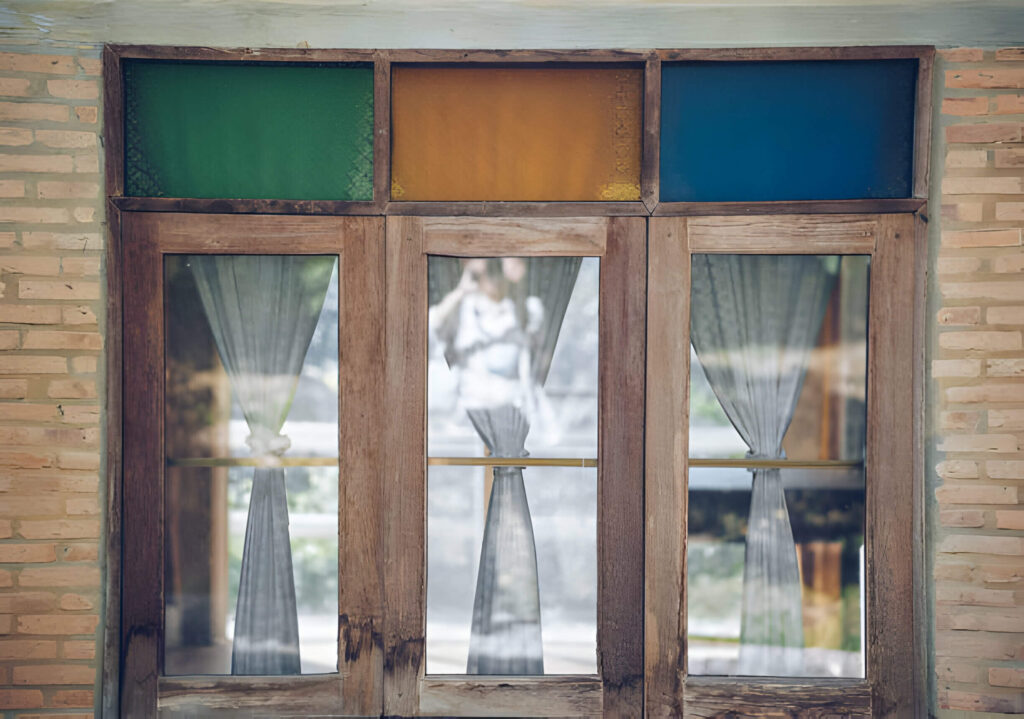
How to block light from top of curtains is a surprisingly tricky endeavor that many homeowners face. You hang up a nice set of curtains only to find bright light still streaming in from above, prevented them from blocking light effectively.
Dealing with this frustratingly common curtain light gap issue is luckily rather straightforward once you understand the potential causes. This handy guide breaks down all the reasons you may be getting light shining over the top of your curtains and the simple solutions for addressing each one.
Read on to finally figure out how to block light from coming through the top parts of your curtains for good with some easy fixes that don’t require completely replacing all your window dressings.

Why Light Comes In Above Your Curtains
There are two main issues that cause light to pour over the top of your curtains:
A gap between the curtain rod and the wall. Very few walls are perfectly straight or have molding all the way across. This leaves gaps of varying sizes between the wall and installed curtain rod brackets. Light shines through easily.
Curtain panels are not long enough. Standard curtain panels go down to 84 or 95 inches. But to fully cover a window from ceiling to floor, you need 108 or 120 inch panels. Otherwise, multiple feet of space is left uncovered above the panels for light to get through.
Measuring Your Curtains Properly to Block Light
To ensure your curtains are doing their maximum light blocking duties, you need to first measure properly:
- Measure from the top of the rod fully down to the floor. Standard height curtains will fall short.
- Account for slight puddling of the curtain fabric on the floor. The curtains should stack with some excess.
- Buy the tallest length floor-to-ceiling panels available, usually 108 inches or 120 inches depending on ceiling height .
Getting panels too long is better than getting some that are slightly short for complete coverage.
Using Extenders to Make Curtains Longer
If you don’t want invest in all new extra long curtains, adding extenders is an easy fix:
- Clip-on extenders act as mini addition panels, clipping right over the existing curtains to add more length.
- Sewing a coordinating fabric length directly to the bottom of the existing curtain panels also does the trick for a seamless, integrated extension.
Filling the Gap Between Curtain Rod and Wall
In addition to lengthening the curtains themselves, addressing the physical light gap space between rod and wall is key for blocking brightness:
- Install thicker curtains that naturally overlap more when drawn, preventing light shining through the smaller gaps.
- Add a valence board that mounts flush to wall, allowing rod and curtains to be positioned below to cover space.
- Use rod pocket curtains with back flap pockets that fit over the rod and completely close gap region.
| Style | Details |
| Clip-on Extenders | Mini panels clip onto existing curtains for more length |
| Sewn Extenders | Extra fabric sewn onto bottom of panels |
| Thicker Overlapping Curtains | More fabric thickness naturally blocks gaps |
| Valence Board | Covers gap by mounting flush to wall |
| Rod Pocket Curtains | Flaps sit in front and behind rod to close gaps |
Darkening Solutions for Blocking Light
If you want maximum assurance that no light comes flooding over the top of your window coverings, investing in dedicated blackout-type curtains is wise:
- Blackout curtains have thick, layered fabric that room darkening assurance.
- Blackout liner curtains have built-in layers of liner fabric that prevent light filtering.
- Room darkening cellular shades tight honeycomb construction stops light.
- Blackout roller blinds look like regular shades but block light completely when lowered.
Solving Specific Light Gap Issues
The solutions above take care of general gap and length issues, but here are some fixes for trickier gap scenarios:
- To fill in the angled gaps on skylights, use blackout rigid panels secured with magnets or tape. Foam tubing also works.
- For odd shaped windows, cut boards and prime them black, mounting them to fill in non-standard curtain gaps.
- Make DIY doubled side panels to prevent light coming in from the sides of standard curtains.
Some light leaks require custom, hands-on solutions. Don’t be afraid to get creative!
Frequently Asked Questions
What kind of rod should I use to hang blackout curtains?
Use a standard pole curtain rod in the diameter best suited for holding the weight of your chosen curtains. Stay away from smaller decorative rods not designed to smoothly draw heavier curtains.
Is it better to have a rod pocket or back tab curtains?
For maximum light blocking efficiency, rod pocket curtains that encapsulate the entire rod area are best. The full coverage leaves no space for light gaps.
Should my blackout curtains go to the floor?
Yes, the closer your darkening curtains extend to the actual floor, the less chance of light peeking in underneath or above. Touching the floor is ideal.
Can I use blackout curtains on doors?
Certain blackout curtain panels are thick and structured enough to mount right onto doors using stair rod hardware up the sides. A tension rod also works.
Where should curtains fall relative to the window?
Mount your rod so the mounted curtains extend about 2-3 inches past the window frame on both sides for full coverage when drawn. Going too far beyond looks awkward.
Making Your Own Light-Blocking Curtain Extenders
If you have basic sewing skills, use coordinating fabric to create your own highly customized curtain extender solution.





